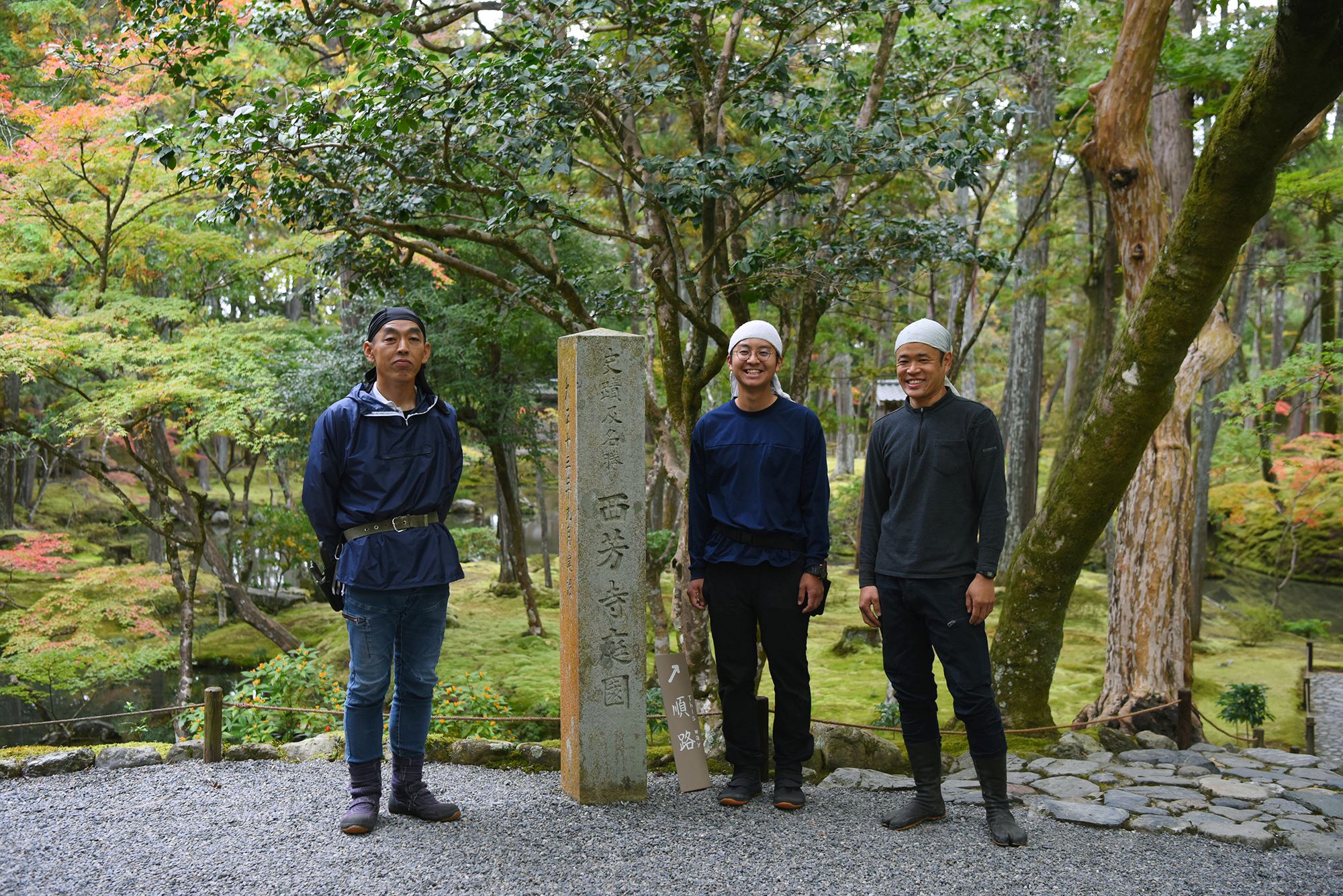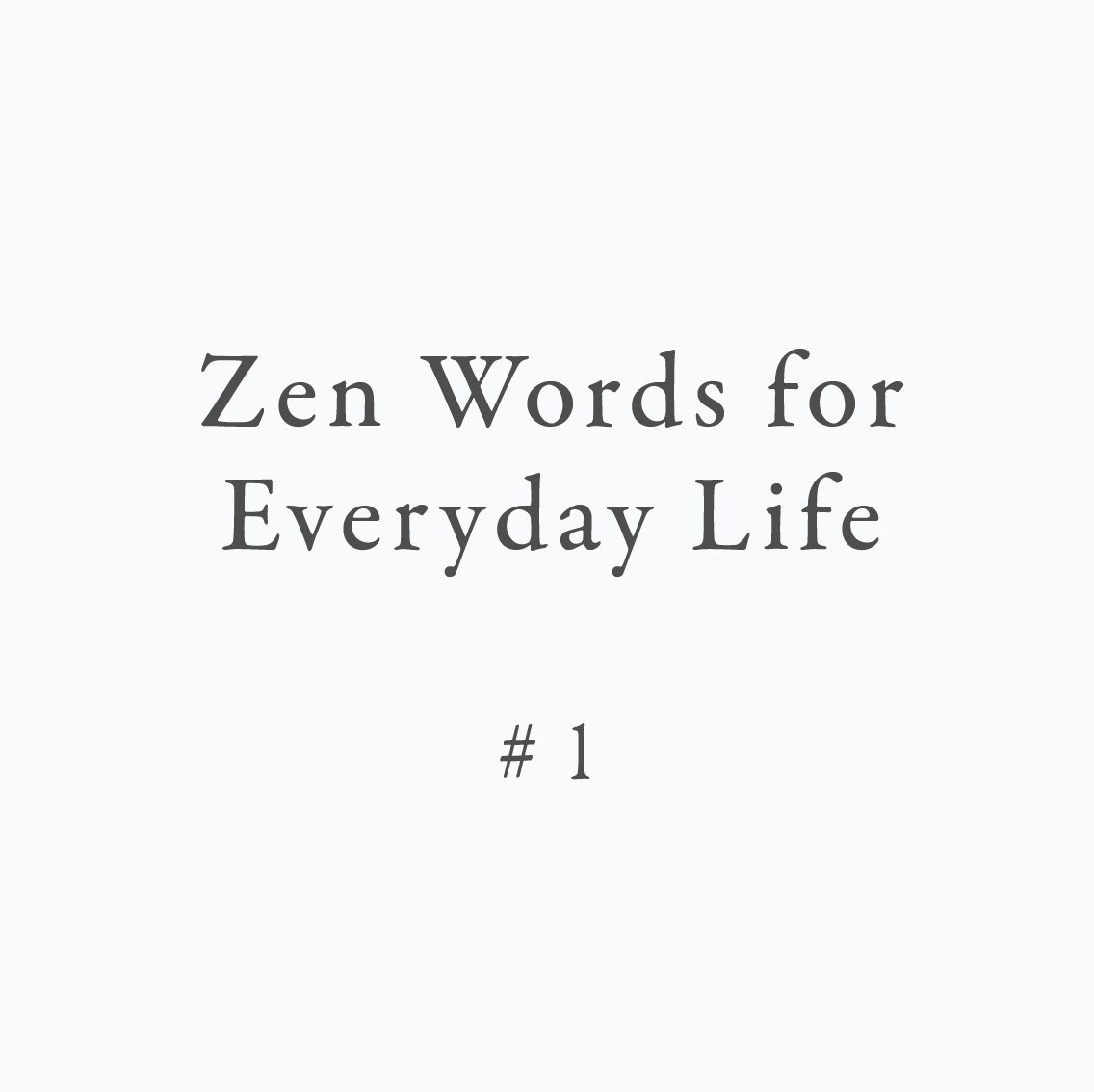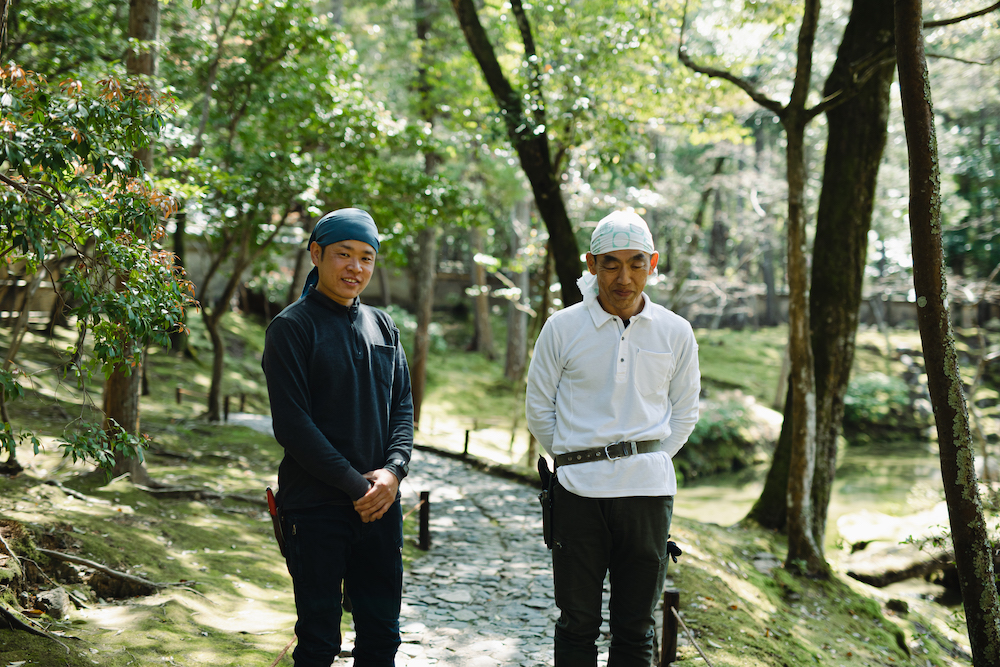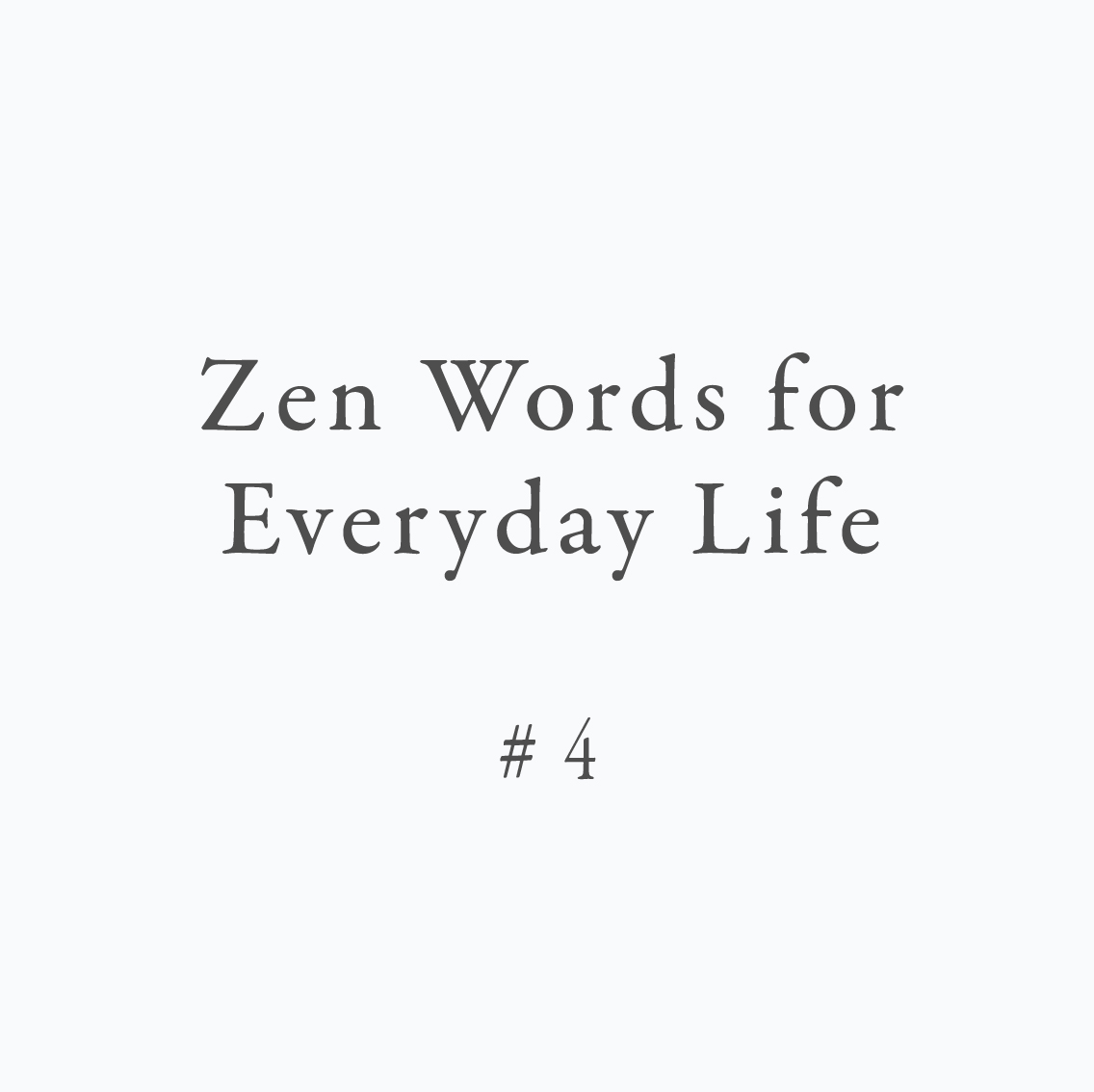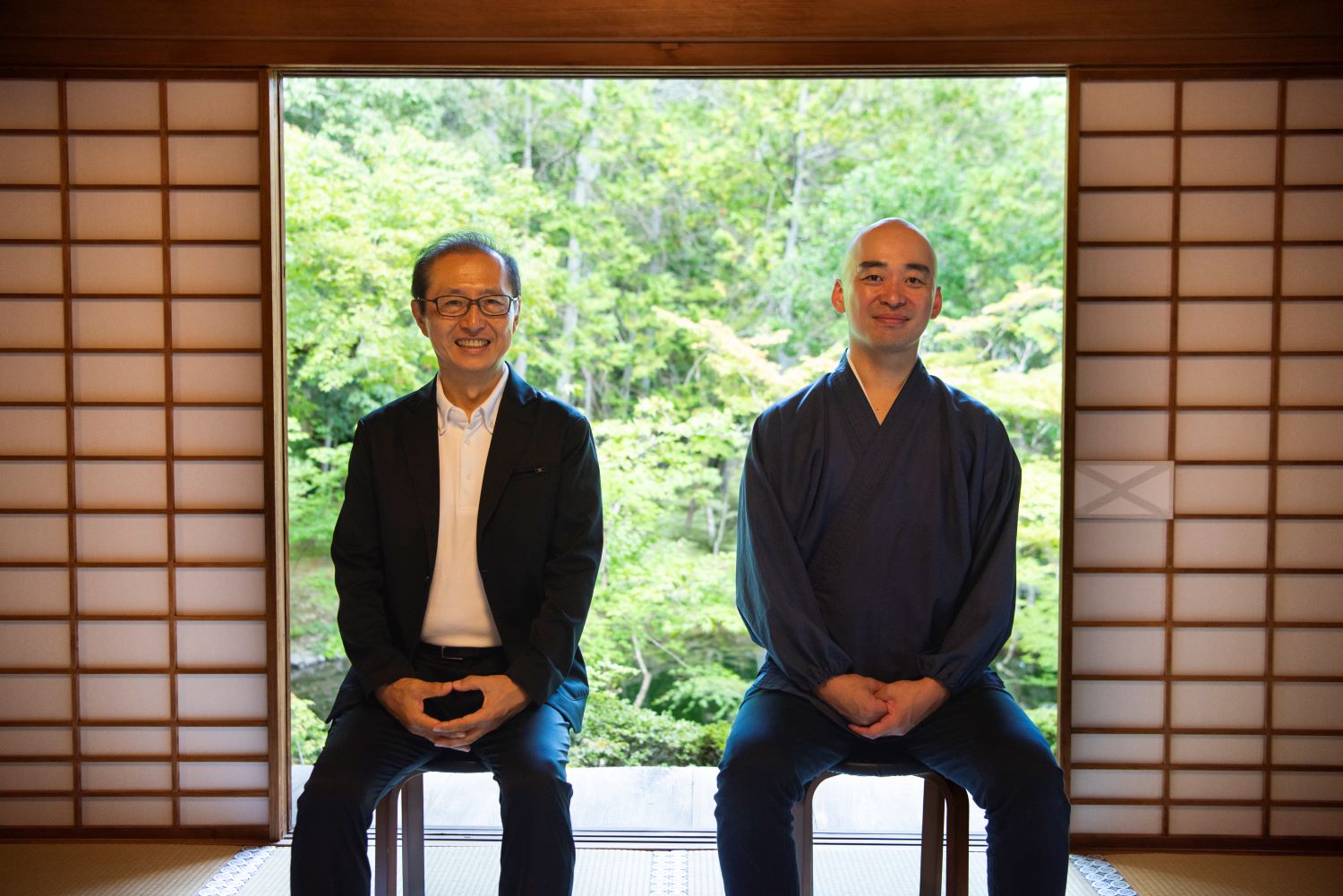2025.10.18
People Preserving Saihoji for Future Generations “Learn Unceasingly with an Open Heart”
Temple Staff vol.2
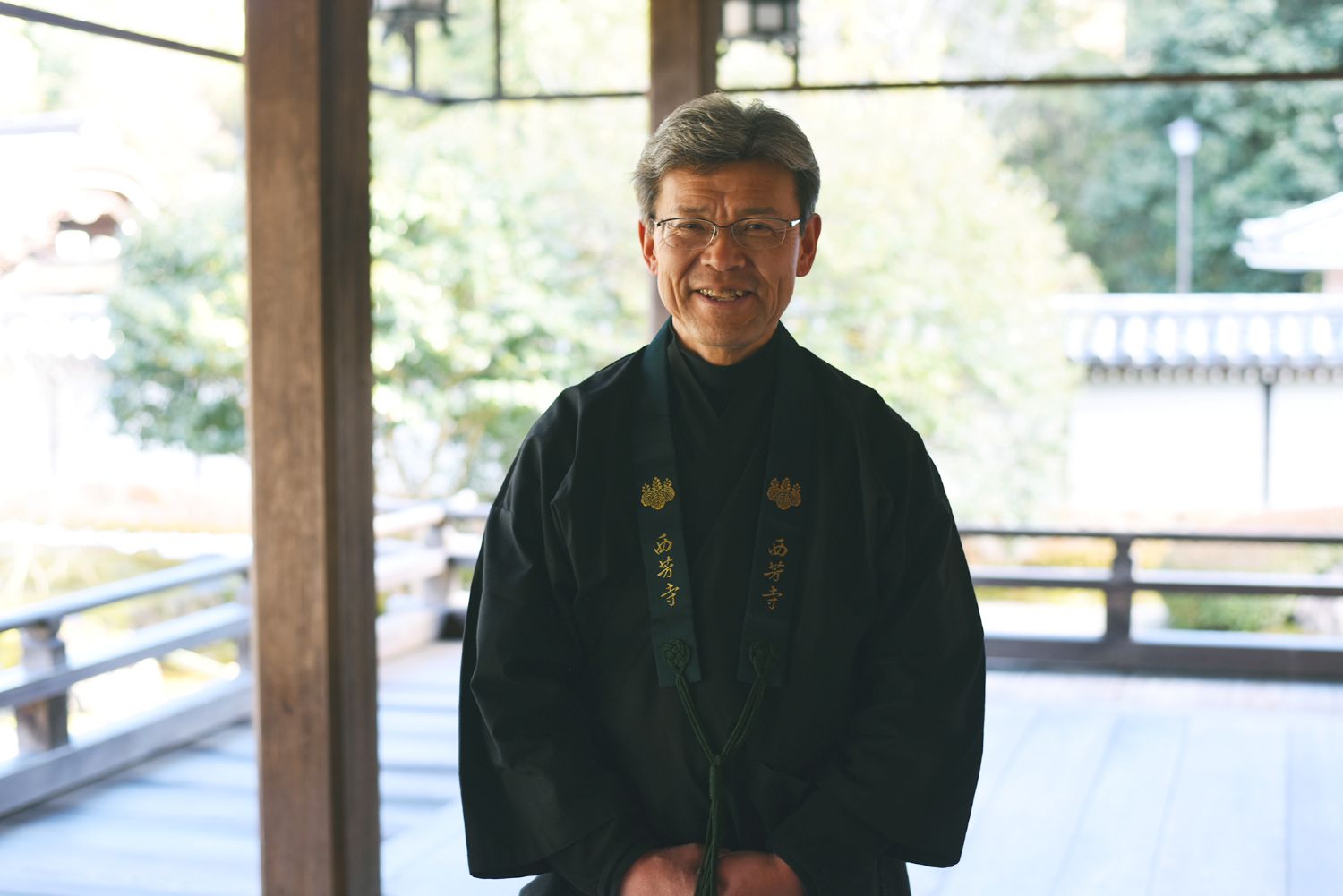
Saihoji Temple is known worldwide for its “Moss Garden.” In order to welcome visitors each day, many people support the temple and its garden with their expert work. In this series, we spotlight the work of those involved in Saihoji, and we will explore what it means to support culture and connect to history.
As the public face of Saihoji, Mr. Taniguchi performs a variety of duties, from guiding visitors to maintaining the temple grounds. Following the publication of the first article about him, Mr. Taniguchi's earnest approach to his work attracted a great deal of attention from readers. In this second interview, we asked him to share some of his personal experiences with visitors and to talk about the things he values most in his daily life. Click here to read the first article.
Taniguchi Koichi
A native of Kyoto, Mr. Taniguchi first came to work at Saihoji in February 1987. For the last 35 years, he has worked as staff of Saihoji, and being the most senior member today, he is now leading the team.
To each his own: favorite seasons and ways of spending time
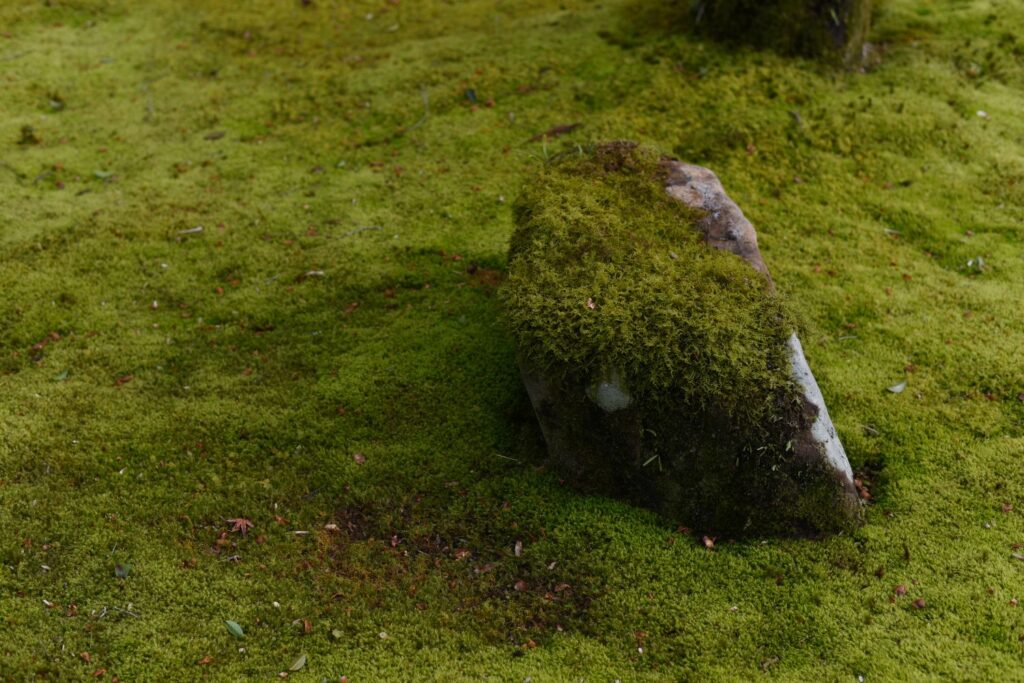
ー Is there anything in particular that visitors often ask you?
A lot of people ask when the best time of year is to visit the garden, but everybody has their own favorite season, so I turn the question around and ask them what they find most beautiful. For example, someone might say, “I love it when the moss has this fresh green color.” In that case, I would tell them that the weather actually has a bigger impact than the season.
ー So, it’s important to understand what the person is looking for.
Exactly. When I ask visitors why they came to Saihoji, they give me a variety of reasons. Some people come to copy sutras, while others visit because they like history and enjoy nature. Some people have told me that they came because Saihoji appeared in a novel they had read.
People come with all sorts of different thoughts in their minds and feelings in their hearts. In order to be able to properly engage with every such individual, I do my best to study the seasons, learn about Saihoji's history, and familiarize myself with the surrounding geography, but I also strive to be a more thoughtful person and understand more perspectives.
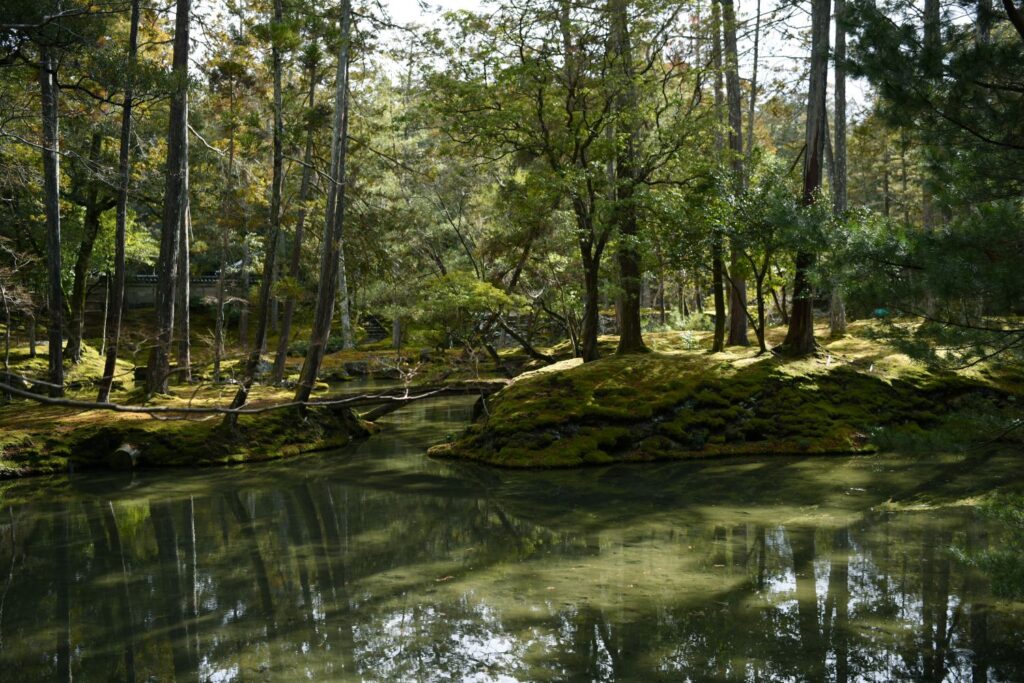
ー Do you ever tell people what you find most attractive about Saihoji?
The important thing is to step into their orbit first to understand their perspective. At the same time, when someone tells you that they always come to Saihoji because they love a certain part of it, then I think it’s worthwhile to suggest some other aspects that they might also find appealing. I am actually waiting for the opportunity to share what I love.
ー What’s your favorite season?
Rather than a particular season, there are certain moments that are wonderful.
The first buds of greenery that emerge at the beginning of spring, the bamboo that can grow a whole meter in a single day. The sound of a single tadpole as it drops into a pond. A fully grown cicada emerging from its cocoon. The smell of the earth after an evening rain shower when the weather has just started warming up. The crisp bite of the cold winter air.
It is through the accumulated efforts of all those who came before us that we can so poignantly experience the vitality of nature.
When Muso Kokushi originally built the garden, he filled it with white sand and green pines. People called it the most beautiful garden under the heavens. That version of the garden turned into ruins and became covered in moss, but even that came to be accepted. There is something about this mossy garden that touches on certain ideas that Saihoji has long held dear, namely, to avoid getting fixated on outward appearances and look at the essence that lies underneath.
As we walk through the garden today, I believe that is why we can sense the glittering and sparkling of life beneath the beauty on the surface.
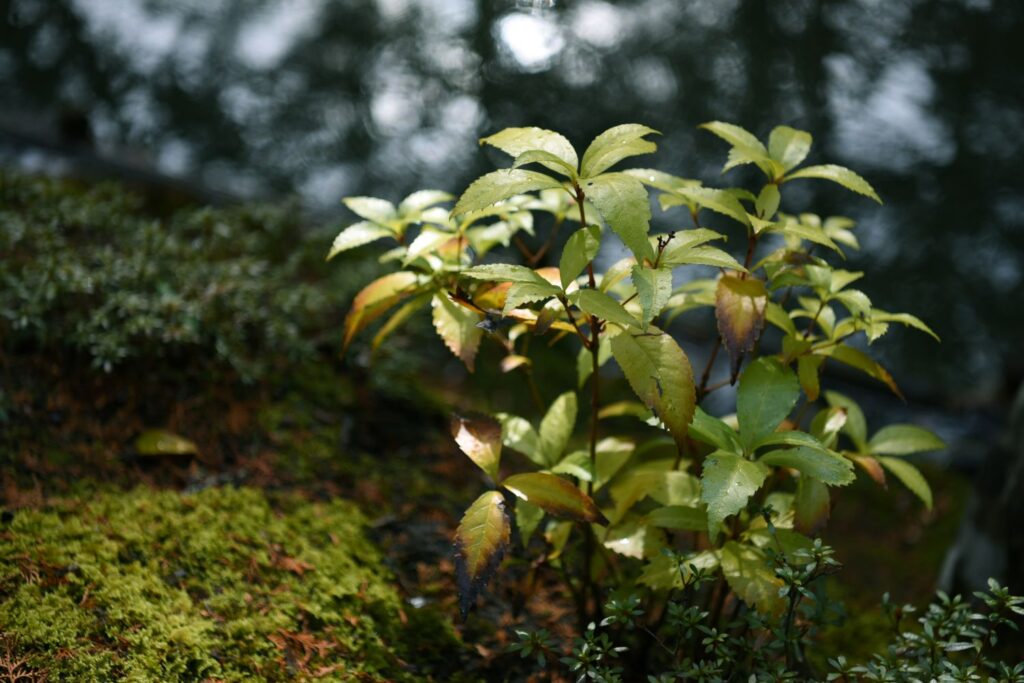
ー Do you have any recommendations on how people should spend their time at the temple?
No, not really, because everyone comes here for a different reason. You might have one person come here to practice introspection, while another comes to learn the teachings of Buddhism through the garden. Someone else might come on a fun holiday, and another comes to relieve fatigue.
If I were to offer any suggestion, it would be to come here, open yourself and empty your mind of all thoughts. I believe that doing so would allow you to feel all sorts of different things.
It’s just that I don’t believe that we should be the ones deciding what’s appealing about the garden. I would be glad if each visitor could discover their own unique way of appreciating Saihoji.
Some things change; others stay the same
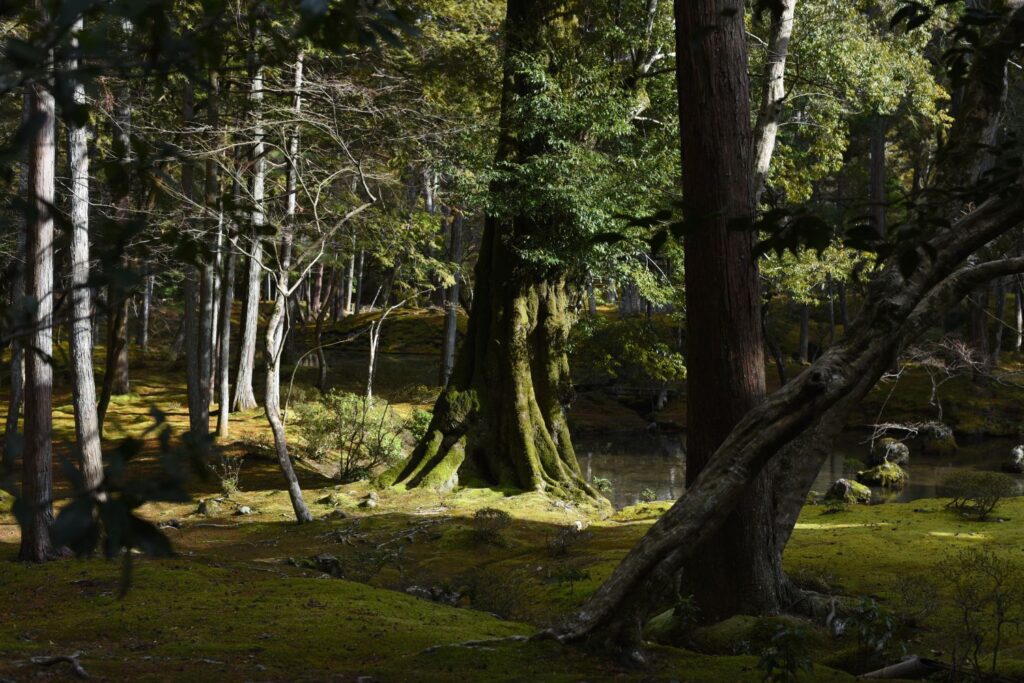
ー Having worked at Saihoji for almost 40 years, do you sense that things have changed?
We get a lot more visitors from overseas. Not that we didn’t have any in the past, but recently we get people from a great number of different countries. Cultural differences can often lead to friction, but I feel that many of the people who come to Saihoji are very respectful.
Besides that, I was also surprised when cell phones became commonplace and how this change affected us. It became possible to call from anywhere, so we got a lot more inquiries by phone. Some visitors would walk around the garden while talking on their phones. That was a big change, and we learned to become more attentive to it.
ー Amidst all the changes, was there anything that didn’t change?
I wonder. The garden itself changes. Trees wither and die or get knocked down by typhoons. Humans also change. We might get blemishes on our skin or our hair may turn gray. But I believe that one thing that has remained constant at Saihoji is our perspective of refusing to view these individual moments in a negative light. Saihoji has fallen into ruin many times over, but we have always managed to overcome adversity by accepting things as they are and relying on the power of nature and human ingenuity.
Zen Buddhism has a doctrine called genjō juyō, meaning that one should not reject the things that happen. Instead, we should accept them as they are. That attitude remains unchanged even today.
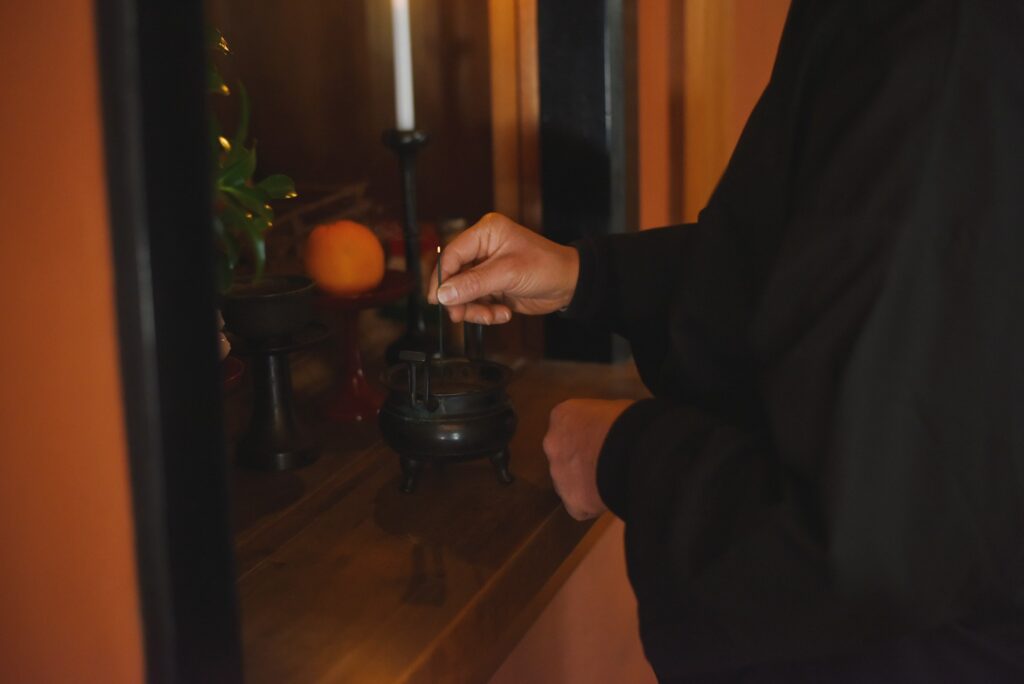
ー Looking back on all your past encounters, are there any that made a lasting impression on you?
This will be about thirty years ago now, but there was a married couple that used to visit us several times a year. It turned out they had sadly lost a child and began visiting temples in search of a place where they could find some peace and quiet. This led them to Saihoji. They said that they found the most peace when they gazed upon the garden after copying sutras. They began visiting regularly after that.
At some point, we began to exchange greetings with each other, and they even told me they were happy to see me. While I was happy to hear it, I remember stopping and wondering if I was worthy of such sentiments. It became a moment of self-reflection for me. I was still quite young at the time, after all.
I haven’t seen them lately. Every now and then, I wonder how they’re doing.
Exploring as a team
ー You have several new members on your team of temple staff. Is there anything you’re particularly mindful of when training the next generation?
All the people who work here are quite organized, so I don’t really need to assume command and start giving out orders. To be honest, though, I am sometimes surprised when I find out that people don’t know how to use a broom or open a paper sliding door. In this day and age, it’s not uncommon for people to grow up having never used a broom, and fewer and fewer houses have paper sliding doors. It should of course be obvious that they would not be familiar with something they have never experienced.
Although we live in the same country of Japan and speak the same language, we grew up in different time periods, so I think it’s important to keep in mind that our own views and experiences are not self-evident. We need to carefully explain things. I often find that as I do so, I end up learning something new myself.
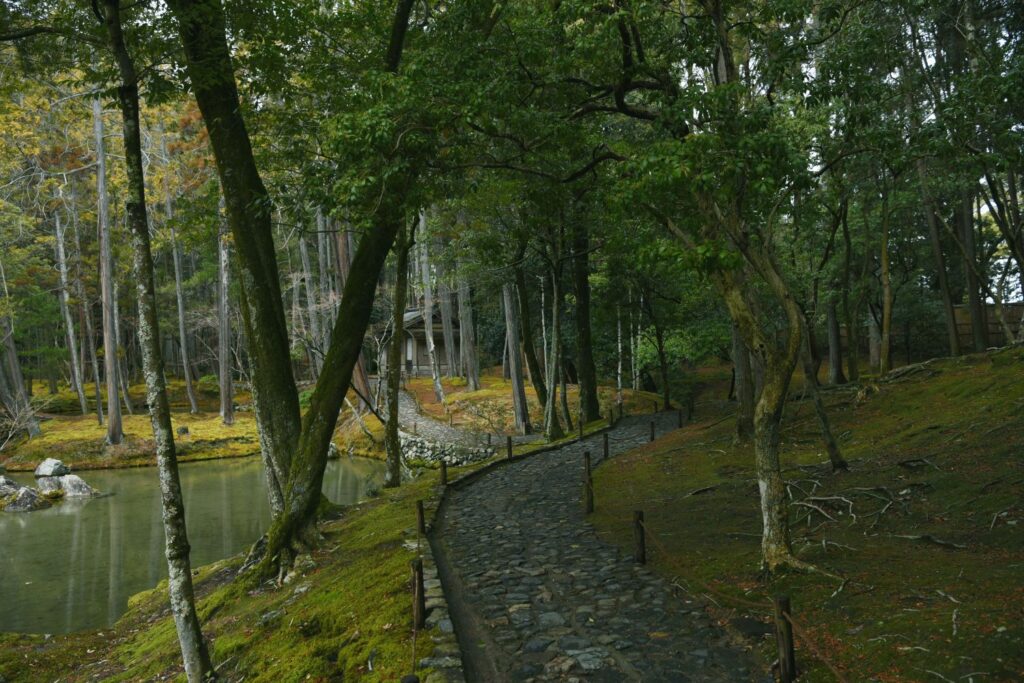
As we carry on with this dialogue, I am sometimes surprised to learn that young people see things from a completely different perspective from my own. My encounters with them have given me the opportunity to reexamine myself and question whether my own thoughts and actions are actually correct.
ー So, you also end up learning something.
That’s right. On top of that, I also try to create opportunities for us to learn together.
At Saihoji, we have a code of conduct that is valued not only by the temple staff, but by everyone, including the monks and the landscaping team. One of its principles is “Exploration,” and as part of this principle, the team of temple staff recently walked the Nishiyama Trail together.
ー You’re referring to the Nishiyama hiking route that takes you from Saihoji through to Arashiyama, right?
We experienced firsthand how long it actually takes to walk to Arashiyama, visiting a cluster of ancient kofun burial mounds along the way. I was surprised by a beautifully well preserved stone chamber among the burial mounds, and the bamboo grove along the Saihoji River was truly mystical. In the midst of nature, we had found a piece of human ingenuity. It was a day that reminded me that Saihoji is a similarly special place.
When speaking with visitors, the breadth and depth of conversation differ entirely depending on whether you’ve actually seen something for yourself. The intensity with which you speak also changes. Having time to explore together with my colleagues was a wonderful experience.
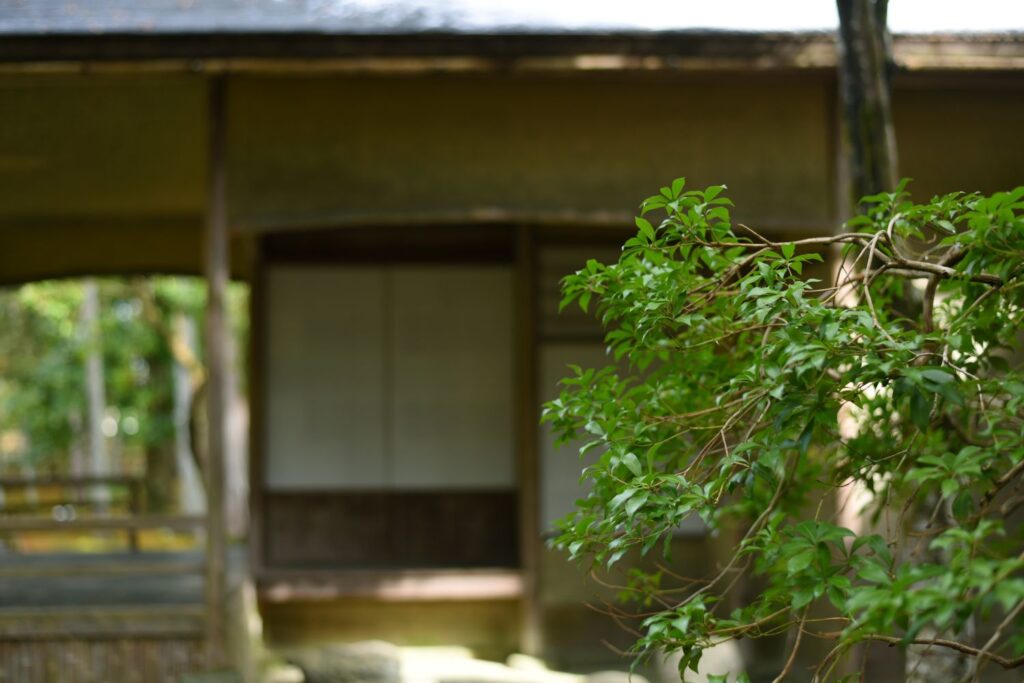
ー What would you like to say to the next generation?
Whether receiving temple visitors or carrying out their daily duties, temple staff should not think in terms of the tasks they need to complete each day. Instead, I hope our team members will consider why they do the things they do. Knowing the purpose expands your perspective. It gives you new insights that can help you to adjust and refine the way you do things.
Take something as simple as cleaning. Depending on what it is you’re cleaning and how you’re cleaning it, you have to adjust the way you sweep and how tightly you wring the water out of your rag. To do so, you need to understand the purpose, thoroughly examine the object, determine its properties, and devise an appropriate method.
I believe it’s important to treat everything—whether stone, tree, or wooden plank—with the mindset that it possesses life. If you approach everything with an open heart, your perspective will naturally shift.
Edited by: MIYAUCHI Toshiki
Written by: HOSOTANI Kana
Photographed by: MOCHIZUKI Sayaka
*These photos were with permission.


